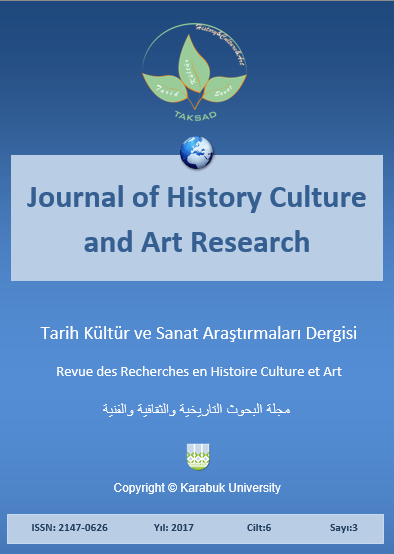The Role of Gilani Businessmen and Artists in Propagation of Relations between Iran and India
DOI:
https://doi.org/10.7596/taksad.v6i3.984Keywords:
Gilani, India subcontinent, immigration, social and political influence, Safavi period.Abstract
One of the places where Gilani people have been a wide settlement is India subcontinent. Since they found India as a safe place for themselves, they migrated to there and have eventually reached to high religious and political growth. Fertile lands of India with unlimited treasures were a motive for migration of famous Gilanies faces such as Abdulrashid Deylami and Ali Gilani to India. However, the chaos during the reign of Mongolians, Turkmens and Safavies resulted into the extinction of Gilani throne. The author in this article through analytic-descriptive method tries to show the provided services by Gilanies immigrant to India that caused into extending of Iranian art, and also political and business relations between both countries.
References
Abedi, Abul-Hassan & Mahmud, Seyed Fayaz (2001). History of Persian Literature in India, vol. 1. Translated by Nategh sharif, Maryam. Tehran: Rahnamoon.
Bayani, Mahdi (1969). Works and Life of Calligraphist, vol 3. Tehran: Tehran University.
Christensen, Arthur Emanuel (1998). Iran in Sassanid Era, vol 9. Translated by Rashid Yasemi. Tehran: Donyaye Ketab.
Ershad, Farhang (2000). Historical Immigration of Iranian to India, vol 2. Tehran: Arts and cultural studies center.
Forroohi, Ali (1990). Gilani physician in Mongolian kings court in India. Gilan Nameh, Vol 2, Vol 1, Muhammad Taqi Jaktaji, Rasht: Ta’ati.
Ibn-Asir, Ez-ul-din (2004). Complete History, vol 12, vol 1, Hamidreza Azhir, Tehran: Asatir.
Islah Arabani, Ibrahim (2001). Gilan Book, vol 2. Tehran: Researchers team.
Khafi, Shahab-ul-din, Abdullah (1991). Khorasan Historical Geography, vol 1, Gholamreza Varharam. Tehran: Etela’at.
Monshi, Eskandar beig (1998). Alem Araye Abbasi, vol 1, Muhammad Ismaeel Ramayana. Bija: Donyaye Ketab.
Munajem, Issac-ibn-Hanin (1991). Al-Marjan, vol 1. Translated by Muhammad Asef fekrat, Mashhad: Astan Razavi.
Nahavandi, Abdul-Baghi (2002). Maser Rahimi, vol 3, vol 1 with Abdul-Hussein Navayee. Tehran: Center of works and cultural faces.
Navayee, Abdul-Hussein (1998). Economic and Political Communication in Safavi Era, vol1. Tehran: SMT.
Velayati, Ali Akbar (2011). Flourishing of Islamic Culture and Civilization, vol 4. Tehran: Center of diplomacy history and documents.
Yaaqubi, Ahmad (1995). Yaaqubi History, vol 1, vol 7, translated by Muhammad Ibrahim Ayati. Tehran: Scientific and cultural publishing.
Yektaee, Majid (1974). Effect of Iran and Islam cultures and civilizations in India and Pakistan, Vol 1. Tehran: Eghbal.
Downloads
How to Cite
Issue
Section
License
All papers licensed under Creative Commons 4.0 CC-BY.- Share — copy and redistribute the material in any medium or format
- Adapt — remix, transform, and build upon the material for any purpose, even commercially.
Under the following terms:
Attribution — You must give appropriate credit, provide a link to the license, and indicate if changes were made. You may do so in any reasonable manner, but not in any way that suggests the licensor endorses you or your use.
- No additional restrictions — You may not apply legal terms or technological measures that legally restrict others from doing anything the license permits.







